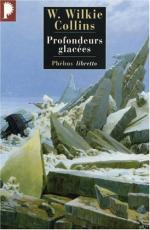|
This section contains 12,665 words (approx. 43 pages at 300 words per page) |

|
SOURCE: “Breaking and Entering: Wilkie Collins's Sensation Fiction,” in Daughters of the House: Modes of the Gothic in Victorian Fiction, St. Martin's Press, 1992, pp. 25-53.
In the following essay, Milbank surveys Collins's sensation fiction, focusing particularly on his unconventional heroines and their ultimate subjugation to authorial and patriarchal authority.
Wilkie Collins is currently enjoying a revival in critical attention, both as a constructor of sensational plots and as a writer who takes a critical stance to the bourgeois realism of the Victorian novel, as well as to the ‘clap-trap morality’ of its ethical values. U. C. Knoepflmacher has been influential in spreading the view of a radical Collins who poses an amoral counterworld of great energy and attractiveness against the pallid vapidity of his heroes and heroines.1 Knoepflmacher would include even a ‘moral’ heroine like Marian Halcombe of The Woman in White in his guerrilla force. Feminist critics...
|
This section contains 12,665 words (approx. 43 pages at 300 words per page) |

|


